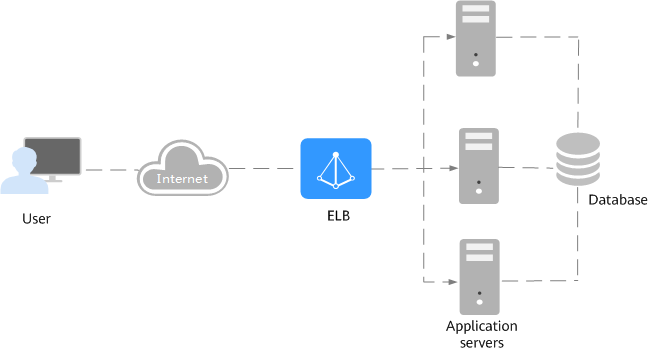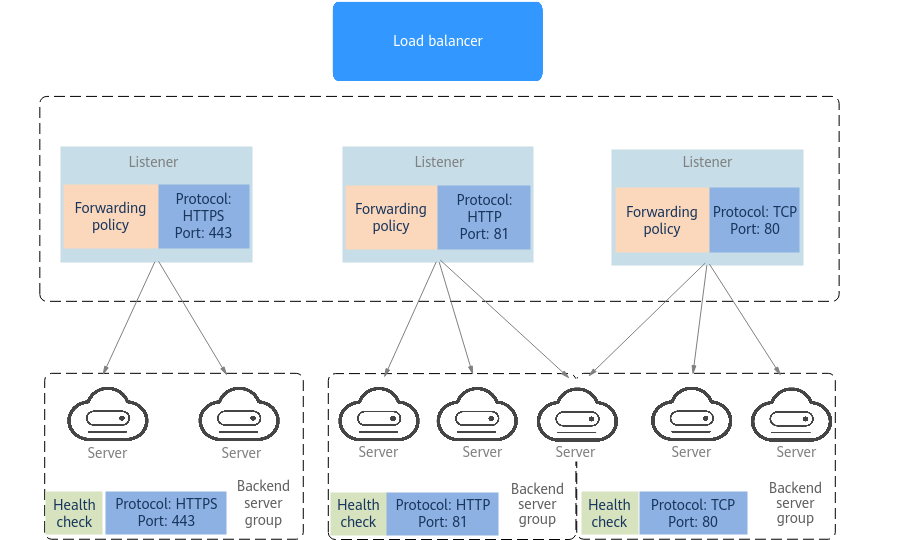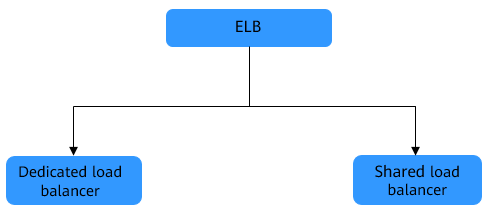What Is ELB?
Elastic Load Balance (ELB) automatically distributes incoming traffic across multiple backend servers based on the listening rules you configure. ELB expands the service capabilities of your applications and improves their availability by eliminating single points of failure (SPOFs).
As shown in the example in the following figure, ELB distributes incoming traffic to three application servers, and each server processes one third of the requests. ELB also provides health checks, which can detect unhealthy servers. Traffic is distributed only to servers that are running normally, improving the availability of applications.

ELB Components
ELB consists of the following components:
- Load balancer: distributes incoming traffic across backend servers in one or more availability zones (AZs).
- Listener: uses the protocol and port you specify to check for requests from clients and route the requests to associated backend servers based on the listening rules and forwarding policies you configure. You can add one or more listeners to a load balancer.
- Backend server group: contains one or more backend servers to receive requests routed by the listener. You need to add at least one backend server to a backend server group.
You can set a weight for each backend server based on their performance.
You can also configure health checks for a backend server group to check the health of each backend server. When a backend server is unhealthy, the load balancer stops routing new requests to this server.

Load Balancer Types
ELB provides shared load balancers and dedicated load balancers.

- Dedicated load balancers have exclusive use of underlying resources, so that the performance of a dedicated load balancer is not affected by other load balancers. In addition, there are a wide range of specifications available for selection.

Dedicated load balancers are not available in AF-Johannesburg and LA-Mexico City1.
- Shared load balancers are deployed in clusters and share underlying resources, so their performance may be affected by other load balancers.
For details about the differences between shared and dedicated load balancers, see ELB Product Types.
Accessing ELB
You can use either of the following methods to access ELB:
- APIs
You can call APIs to access ELB. For details, see the Elastic Load Balance API Reference.
Feedback
Was this page helpful?
Provide feedbackThank you very much for your feedback. We will continue working to improve the documentation.See the reply and handling status in My Cloud VOC.
For any further questions, feel free to contact us through the chatbot.
Chatbot








